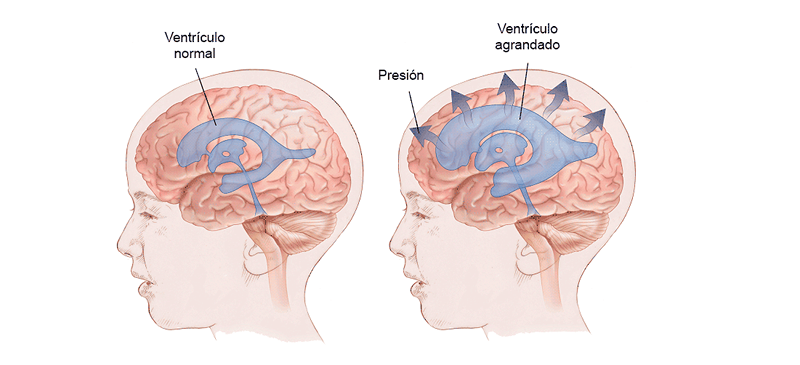Our mysterious ally the dream

- 4275
- 245
- John Von
One third of our existence (220.000 hours in 60 years) we pass it with the closed eyelids, in a mysterious and unknown state that we call sleep. But, eye! All this time is an active time and in it many changes occur in both mental activities and in body functions, and all of them of enormous importance for our physical and psychic balance. In short, it fulfills a repair function for our body, it helps to recover energy, thermoregulation, the consolidation of learning and memory, among many other functions.
It is important to mention that Aristotle already spoke to us about the importance of dreams, and many historical characters have recorded us of their dreams: Julio César, Descartes, Bismarck, Hitler and many others, however, until 1899, when Sigmund Freud publishes his construction site The interpretation of dreams, There is no true scientific or professional interest in its interpretation.
Content
Toggle- Sleep phases
- Quantity and quality
- Sleep problems
- 1. Insomnia
- 2. Hypersomnia
- 3. Somnambulism
- 4. Narcolepsy
- References
Sleep phases
In the sleep period we find two stages, called a slow or not REM sleep phase, and fast sleep or REM phase (acronym that correspond to your name in English: Rapid Eye Movements or rapid eye movements). He Dream no rem, It is divided, in turn, into four phases with different characteristics. These phases alternate cyclically as we remain asleep (every 90/100 minutes, approximately, a new sleep cycle begins in which the last 20 or 30 minutes correspond to the PHASE REM).
- Phase i. It is the light sleep phase, in which people are still able to perceive most stimuli (auditory and tactile). Phase I dream is little or nothing repairing. The muscle tone decreases compared to the state of vigil, and slow eye movements appear.
- Phase II. In this phase the nervous system blocks the access roads of sensory information, which causes a disconnection of the environment and, therefore, facilitates sleeping activity. Here the dream is partially repairing and occupies about 50% of the sleep time in the adult. The muscle tone is lower than in phase I, and the eye movements disappear.
- Phase III. It is a deeper dream (called Delta), where the sensory block is intensified. If we wake up during this phase, we will feel confused and disoriented. In this phase it does not dream, there is a decrease of 10 to 30 percent in blood pressure and respiratory rhythm, and growth hormone production increases. Muscle tone is even smaller than in phase II, and there are also no eye movements.
- Phase IV. It is the phase of greater depth of sleep, in which brain activity is slower (predominance of delta activity). Like phase III, it is essential for physical and, especially, psychic, organism deficits (phase III and IV deficits cause daytime sleepiness). In this phase, the muscle tone is very small. It is not the typical phase of dreams, but sometimes they can appear, in the form of images, lights, figures ... without a plot line.
- REM phase: It is also called Paradoxical dream, Due to the contrast of muscle atony (total relaxation) of deep sleep, and the activation of the central nervous system (sign of vigil and alert state). In this phase the dreams are presented, in the form of narration, with an plot thread even if it is absurd. The brain electrical activity of this phase is rapid. The null muscle tone (muscular atony or paralysis), prevents the sleeping person from materializing their dream hallucinations and can harm. The most typical alterations of this phase are nightmares, REM dream without atony and sleep paralysis.

Quantity and quality
Regarding the ideal amount, there is no very reliable standard measure because not all have the same needs. Some are great with five hours and others with ten, and both ends are normal. Young people, athletes, people who make great physical or psychic efforts, who have a larger constitution usually need more.
As a curious anecdote I tell you that Edison used to sleep an average of five hours, while Einstein used to sleep ten hours. What matters in the end is the quality more than the quantity.
What is certain is that if we stay awake for a very long period of time or if we try to suppress the dream continuously, alterations in our body will appear, for example: an increase in anxiety and irritability, problems with attention, attention, concentration and memory, loss of reflexes, depression and in severe cases even death.
 Hydrocephaly: a hydrodynamic disorder of cerebrospinal fluid
Hydrocephaly: a hydrodynamic disorder of cerebrospinal fluid Sleep problems
As we have seen the fact of Not getting a sleep and deep dream causes serious problems. We can all "lose sleep" punctually, this can be for several reasons, for example: situations that lead stress, health problems and medications, too many hours of work/ work in turn, drink alcohol, eat very close to bedtime , etc. However, most of these situations are punctual. When this is not so, when the problem is being very constant, we fell asleep during the day, we snor. We will know only some of the most common:
1. Insomnia
We talk about insomnia when quality problems and/or quantity with sleep, exceed an intensity that makes them intolerable and when we have symptoms such as: alterations of humor, difficulty concentrating, drowsiness with difficulty to be able to fall asleep during the day, physical tiredness and mental, general state of nervousness, tension and anxiety.
There are many factors involved in the appearance and maintenance of insomnia. Among the most important are psychological (a tendency to turn things around, difficulty handling negative emotions, erroneous beliefs in relation to sleep, with the consequent inappropriate habits), stress and fear of not sleeping.
Both main types of insomnia are:
- Primary insomnia: When the cause that causes it, it is not easily identified or is not associated with any other disease
- Secondary insomnia: It appears as a consequence of different causes, such as a disease, a mental disorder, the consumption of certain substances or medications or the existence of environmental problems (noise, temperature) or social (family and labor problems, working hours for work or trips ).
According to the duration of the insomnia we would also have: Transitory type insomnia (Its duration is less than a week), short or acute insomnia (last one to four weeks) and Chronic insomnia (last four weeks or more).
2. Hypersomnia
Hypersomnia is a sleep mechanism disorder, which is characterized by a constant and involuntary excessive dream. We would have great difficulty staying awake, and this would cause us significant functional deterioration, among which we would have: fatigue, tiredness, loss of concentration and sensory, movement problems and a great loss of attention in our environment.
In most cases there are no difficulty reconciling; This is continuous, but not repairing. It usually has problems when we get up feeling confusing and irritable, presenting what is known as sleep drunken and that affects during the sleep-vigilia transition.
During the day, there is an almost continuous feeling of drowsiness, in which automatic and routine behaviors can occur, of which we would not be aware.
3. Somnambulism
Speavering is a disorder that occurs When we walk or do another activity being asleep. We can stop and look like we were awake, get up and walk or perform complex activities. Some people even drive a vehicle while they are asleep.
The episode can be very short (a few seconds or minutes) or it can last up to 30 minutes or more, but most episodes last less than 10 minutes. If they are not disturbed, the sleepwals will return to sleep. However, they can fall asleep in a different or even unusual place.
This alteration can occur at any age, but it happens more frequently in children from 5 to 12 years of age, and seems to be hereditary.
In adults, sleepwalking can occur due to: alcohol, sedatives or other medication, medical conditions such as partial and complex convulsions or mental disorders.
4. Narcolepsy
It is the most serious case of hypersomnias, it is a sleep disorder that causes excessive drowsiness and uncontrollable and frequent sleep attacks during the day, in general at inappropriate hours these periods of extreme drowsiness occur every 3 or 4 hours, this impulse Sleeping is unstoppable and disabling.
More than half of individuals with narcolepsia can experience a loss of sudden muscle tone and weakness (cataplexia) triggered by a sudden emotion, as well as sleep paralysis, in which there is momentarily inability to move or talk when you wake up.
Around half of the individuals with narcolepsia go through sleep -similar states, between sleep and vigil (hypnagogical hallucinations). The narcolepsy It originates from low concentrations of chemical messengers in the brain (dopamine and norepinephrine), and genetic factors.
References
- The dream (2007). In Encyclopedia of Psychology (Vol. 4, 11-55 pp). Spain: Ocean.
- Medline Plus. (2013). Somnambulism. [Date of consultation: October 5, 2015]. Available at https: // www.NLM.NIH.GOV/Medlineplus/Spanish/Ency/article/000808.htm.
- Ruíz de la Rosa, J. (2014). Dreams. [Date of consultation: October 5, 2015]. Available at http: // www.GPYF.is/art%c3%adulos/.
- The phases of sleep. (2015) [Date of consultation: October 5, 2015]. Available at: http: // www.Webconsultas.com/narcolepsia/las-phases-of-sueno-2983

